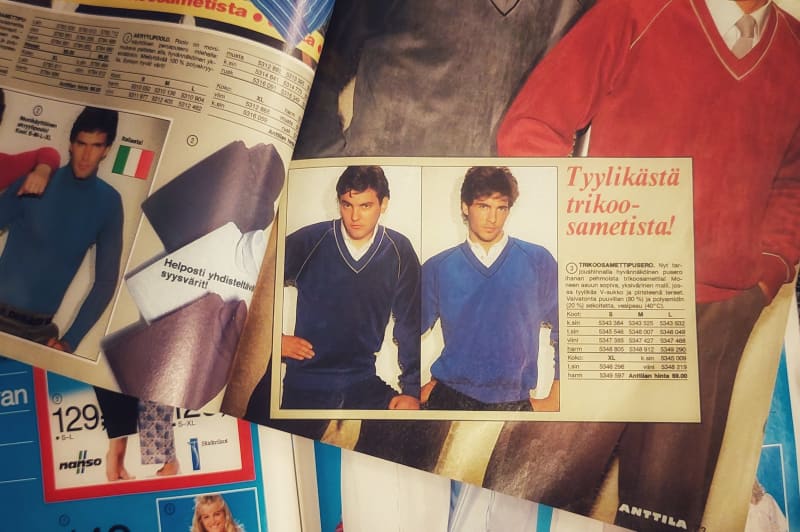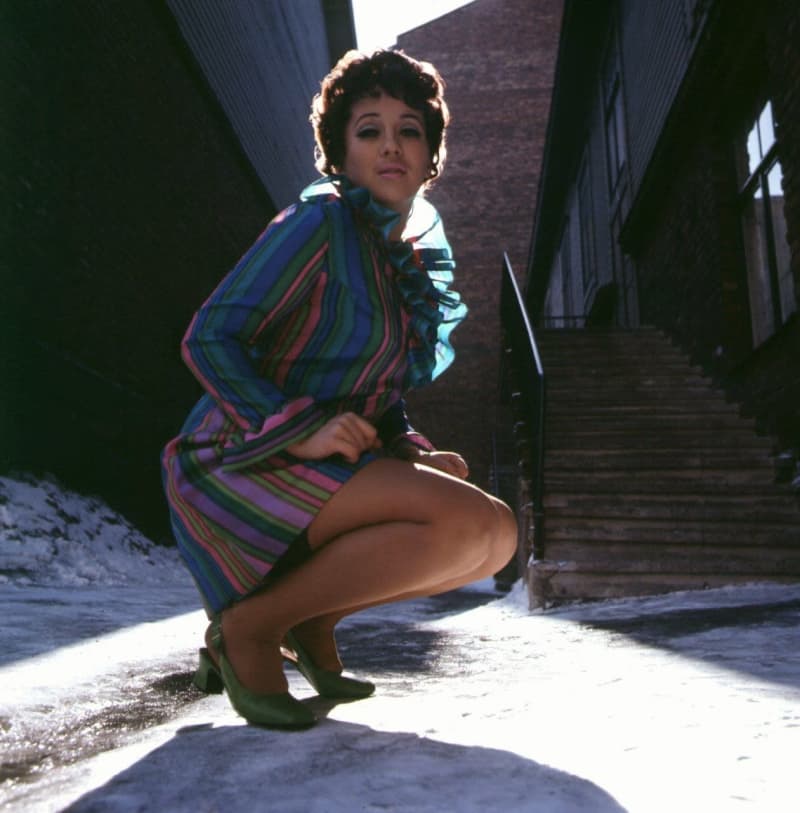Cheap clothes are not just the scourge of today’s youth. Man-made fibres became more common when Finns moved to apartment blocks, where they could sleep without woolen clothes.
Cheap clothes come at a high price. Every second, somewhere in the world, a truckload of little-used clothing textiles is taken to the incinerator or landfill. Indeed, the carbon footprint of the garment industry is larger than that of shipping and aviation combined.
The media like to decry the fact that young people in particular only wear the clothes they buy once or twice, and then order more from the wonderful world of the internet.
But buying fast fashion is not just the vice of today’s youth. As early as the 1970s, Finns were swapping their self-made or tailored, hard-wearing clothes for factory-made suits.

The nation needs terylene
In the 1950s, terylene and other oil-based artificial fibers that entered the market revolutionized the way Finns dressed. The profit flow of new materials was started by the fact that synthetic fibers and the production of clothes with an assembly line lowered the prices of clothes.
The price of clothes mattered, because at one time clothes could be the most important possessions that a person owned.
Therefore, the original inscriptions accurately listed the clothes owned by the deceased.
Even in the 1960s, clothes were not thrown away, but old clothes were adapted to the times as fashion changed. There were many instructions for this in women’s magazines.

The clothes according to the new fashion were even structured in such a way that it was not possible to modify them at home as conveniently as, for example, woolen clothes.
Woolen clothes replaced by velour
Even in Finland, woolen clothes were worn until the time when emigration brought people to the cities.
In the cities, people settled in apartment buildings with central heating. It was no longer necessary to dress against the cold inside, and woolen clothes were replaced by lighter textiles.

The spread of new clothing materials was also helped by the fact that in the bathrooms of urban homes, light clothes could be easily washed in the washing machine. It was a really big relief, because washing clothes by hand had been a heavy chore, which took up hours of free time.
As baths became more common, hygiene standards also changed. Even a Finn could no longer smell sweat. Therefore, you also had to be able to wash your clothes more often, and light synthetic fiber clothes were perfect for this.
You couldn’t tell a gentleman from a fool when he was dressed up
The change in fashion also contributed to the emergence of new materials. In the past, men dressed in work clothes or a suit and tie, and women in a dress or skirt and shirt.
In the latter half of the 1960s and the beginning of the 1970s, the line between inappropriate and appropriate changed. For example, leotard shirts had previously only been used as underwear, but leotards also became an accepted outerwear in a short time.

The new materials made it possible to make colorful and casual clothes that fit well with the informal and egalitarian spirit of the era. It was no longer possible to read from the clothes which social class the wearer actually belonged to.
It was also possible to get these new, colorful clothes in the countryside. That was taken care of by the internet of the time, i.e. the catalogs of Anttila and other mail order companies, from which you can also buy clothes in installments.

Nowadays, ordering clothes even from abroad is of course even easier. And there is plenty to buy, because fashion cycles no longer follow the changing of the seasons like when you ordered a terylene shirt from your grandmother Anttila’s catalog.
*Source: Laura Ekholm and Matleena Frisk’s article How did tricot become outerwear? Tricot clothes at the turn of the 1960s from the Säädyllitä og Säädytöntä book (SKS 2019)*
*Should we go back to old woolen clothes and natural fibers when it comes to dressing? How does sustainability show up in your clothing? You can discuss the topic on Mon 12.12. until 11 p.m.*
